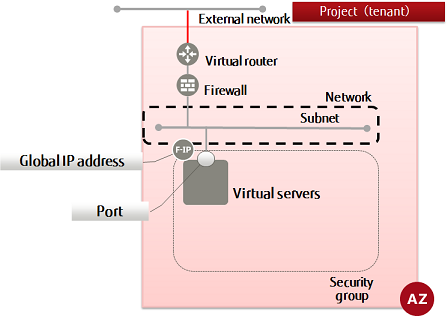This section explains how to connect a virtual router to an external network by updating its settings.
-
Set the environment variables below as follows:
$ ROUTER_ID=<targetVirtualRouterId>
$ EXT_NET_ID=<externalNetworkIdToBeConnected>
The external network ID can be checked using the API executed in step 3 of
Creating a network.
$ curl -Ss $NETWORK/v2.0/networks -X GET -H "X-Auth-Token: $OS_AUTH_TOKEN" | jq .
Subnets with names that start with "inf_az1_ext_net01" and
"inf_az2_ext_net01" are created associated with the default
external network.
-
Execute the following API:
$ curl -Ss $NETWORK/v2.0/routers/$ROUTER_ID -X PUT \
-H "X-Auth-Token: $OS_AUTH_TOKEN" -H "Content-Type: application/json" \
-d '{"router": {"external_gateway_info":
{ "network_id": "'$EXT_NET_ID'"}}}' | jq .
The following response is output:
{
"router": {
"status": "ACTIVE",
"external_gateway_info": {
"network_id": "<specifiedExternalNetworkId>",
"enable_snat": true
},
"name": "<specifiedVirtualRouterName>",
"admin_state_up": true,
"tenant_id": "<projId>",
"routes": [],
"id": "<specifiedVirtualRouterId>",
"availability_zone": "<availabilityZone>"
}
}
For the availability zones, AZ1 is expressed as "jp-east-1a", and AZ2 is expressed as "jp-east-1b".

